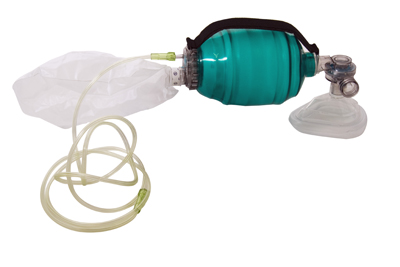Okay I guess I'll tell you what I had to do. Last week, we did skill set exams. Basically, we were called into a room, given a scenario, and then we had to demonstrate how to handle it. The scenarios were things like:
- A woman is having a stroke, but we weren't told that. We had to recognize it and show what we would do.
- A child is choking. We demonstrate the proper procedure, and demonstrate CPR skills if the child passes out.
- You come upon 2 unconscious victims. You have to show how you would go about caring for them.
We took written tests as well last night. They included a Lifeguarding exam, a CPR/AED (Cardiopulmonary Resuscitation/ Automated External Defibrillator), and an Emergency Oxygen Administration exam. After passing all the parts of these exams, I am certified to lifeguard, use an AED, and administer CPR and emergency oxygen. I should be getting my certification card in mid-March. I'm excited!
Above is what an AED looks like. The pads go on the chest of the victim, and it analyzes their heart rhythms and tells the rescuer if the victim need a shock, or to continue CPR.
Emergency oxygen can be given in varying concentrations, through many different devices including:
A BVM (Bag Valve Mask). This rests over the victim's nose and mouth, and oxygen is pumped manually into the lungs. This is meant for use on nonbreathing, with high concentrations of oxygen.
A non-rebreather mask. This covers the victim's mouth and nose, and straps on using elastic around the back of the victim's head. This is used with moderate-high concentrations of oxygen, only on breathing victims. The bag fills with oxygen, which the victim breathes in, and the exhaled air escapes through the flutter valves on the side of the mask.
A resuscitation mask with an oxygen inlet. This is held onto the face, over the nose and mouth. It is the same as the mask used for CPR, however it can be hooked up to an oxygen tank to deliver low-moderate concentrations of oxygen. It is used on victims who are having difficulty breathing, and occasionally on victims who are not breathing.
*images from google.com/images*
*images from google.com/images*





Congratulations! That's definitely a useful skill to have! Nice work on clear explanations in this post. The pictures definitely help.
ReplyDeleteThank you! I'm actually hoping to work as a lifeguard over the summer, so yes, it will definitely be useful. Haha
ReplyDelete